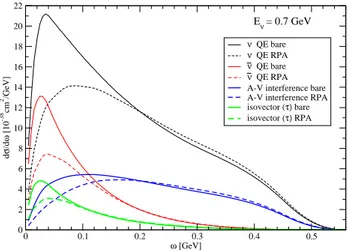Neutrino and antineutrino quasielastic interactions with nuclei
Texte intégral
Figure



Documents relatifs
Although such a transformation represents a certain approximation, CT based AC of PET datasets using such attenuation maps has been shown to lead to the same level
In particular, in the latter case, a clear understanding of the spin-dependent momentum dis- tribution of nucleons in deuterium is of great importance, not only for a
The temperature dependence of this integrated QES intensity is shown in the upper panels of figures 3 and 4 for the two samples: we note an increase up to 500 K then a decrease
The dynamics of the electron hole relaxation reflects itself in the damping mecha- nism of the magnetic excitations and leads to the quasielastic mode a t finite wave vector
The data on inelastic electron scattering and the ratio of longitudinal to transverse isovector spin surface response as measured recently by inelastic proton
tation model, which includes crystallographic ope- rations of cubic symmetry combined with reorienta- tions about molecular axes. - In this model one supposes :. i) That
Quasielastic neutron scattering experiments were performed with Na-hectorite, Ni-hectorite, and Sm-hectorite samples in order to find out whether Sm 3+ is present in the
In this context, we report a precision measurement of the electron antineutrino yield with the STEREO experiment at a reactor using highly enriched 235 U fuel as well as a